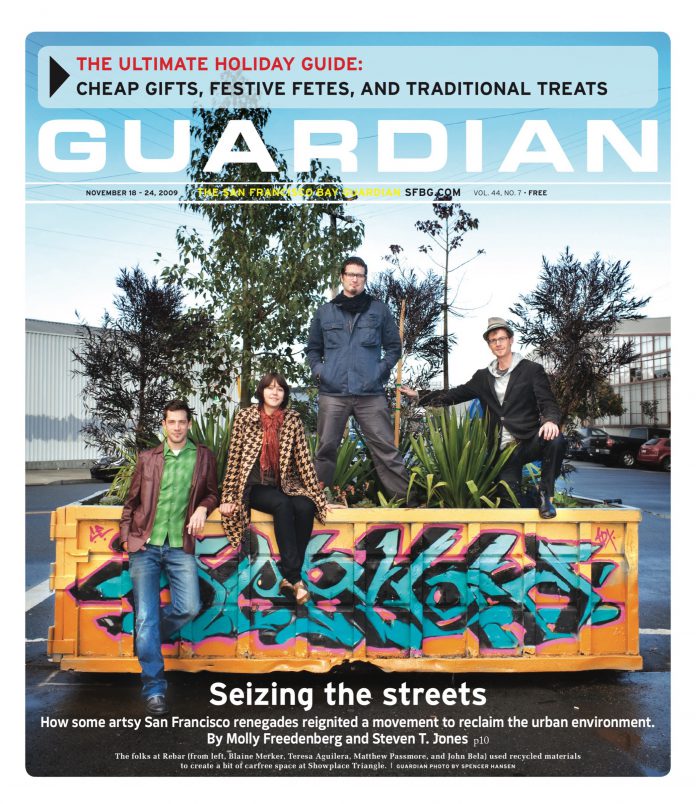arts@sfbg.com
MUSIC When Black Sabbath comes on, I’m instantly transported to those high school days of driving myself to class and headbanging to every track on Sabbath Bloody Sabbath (Warner Bros., 1973) so hard I could barely see the road. Led Zeppelin forced me to do ridiculous amounts of air guitar in my room, while the Beatles saw me go through puberty and live in fear of the male species. Years later, Kate Bush’s Hounds of Love (EMI, 1985) was my soundtrack to falling wildly, truly in love.
The floating world in which memories exist is the same zone where the narratives of our lives take form. For any music freak, certain albums, guitar solos, or screeched lyrics bring the mind’s-eye back to that realm. Alan Palomo, the man behind the electro-psych project Neon Indian explicitly mines this tendency with a laser-like synth sound that seems swiped directly from the early 1980s.
"Music is getting more and more referential," said the Mexican-born, Texas-raised Palomo. "It’s becoming all about context. It’s not just about hearing a song, it’s about hearing it reverberating out of a room and trying to find sense in that. It’s about hearing a song playing in the other room when you were four while eating Cap’n Crunch."
What ’80s kid doesn’t get wistful about watching cartoons in the morning over a bowl of soggy cereal? The music Palomo creates on keyboards, samplers, and mixers taps into the collective consciousness of anyone who lived through that particular decade. Neon Indian’s seamless first full-length Psychic Chasms (Lefse) fuses the more dancefloor-oriented sounds of New Order with the chugging electronic pop of Electric Light Orchestra. Lyrically, it taps into themes of youth that are forever cherished in the corners of our brains: mindless delinquency, the lazy days of summer, and unruly hormones.
"I feel like it was a whimsical generation," Palomo says regarding the pop culture decade that spawned many of his influences. "The music had a really strange quality. It’s cheesy but very sincere — there’s a heartfelt vibe. A lot of music these days doesn’t really attract me on that emotional level because it doesn’t have the same narrative qualities. Those songs [from the ’80s] tell stories, and now people are afraid to do that."
Some writers have pinpointed Neon Indian as part of a blossoming sound that boasts newfangled genre tags like chillwave, glo-fi, tape-hiss, or hypnagogic pop because of its laid-back, homespun, synthy, foggy-eyed psychedelic artistry. It’s been everywhere since this summer, as hazy bits of songs from the distant past of cassette music and analog sound are lovingly reinvoked by a slew of new outfits such as Washed Out, Toro Y Moi, and Memory Tapes. But Palomo, who performs with a full band onstage, believes that Neon Indian is distinct.
"I don’t see myself in chillwave, even though others do," Palomo says. "Neon Indian is not completely about nostalgia. It should also be about songwriting. And it’s not necessarily just revisiting stuff. I always see it as a continuation of the sound. Why does a genre have to end? It can just evolve. People really want that kind of emotional experience in music."
Psychic Chasms is a heady collection of inventive retro-futuristic pop homages that play with funk and disco, Nintendo bleeps and burps, bent and breathy vocals, and distorted guitars. Palomo, a self-described extrovert, wrote the album over the course of three weeks fueled by intuition and solitude. "I felt like a deadbeat and wrote music all the time," he explains. "It’s called Psychic Chasms because it sounds like an interior land survey, like I was trying to map out the way my mind works, the memories that plague me consistently, and how they determine my emotional dispositions now. The older you grow, the more convoluted memory becomes."
NEON INDIAN
With The Love X Nowhere, Nite Jewel
Thurs/19, 8 p.m. $10
Rickshaw Stop
155 Fell, SF
(415) 861-2011

